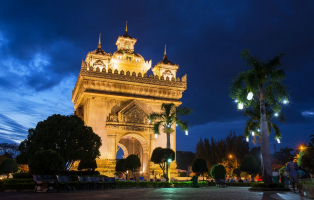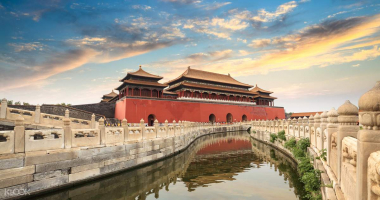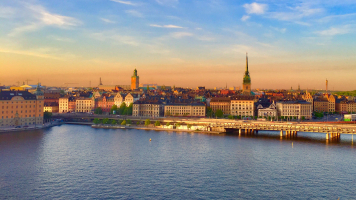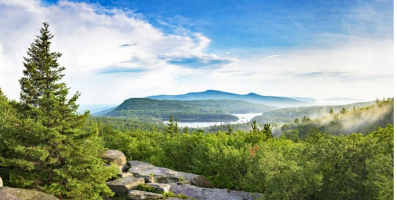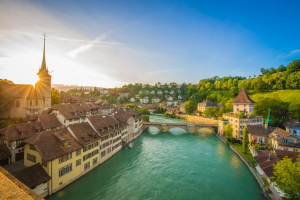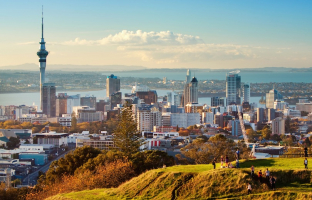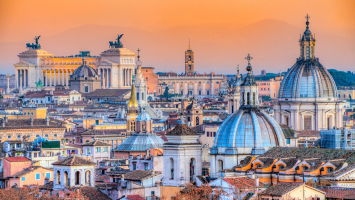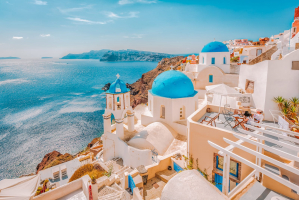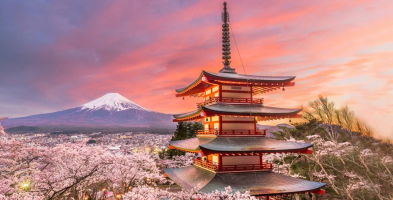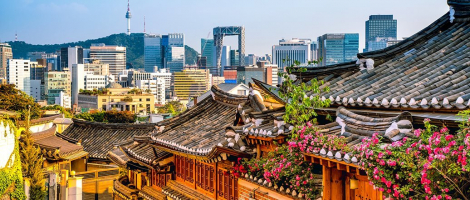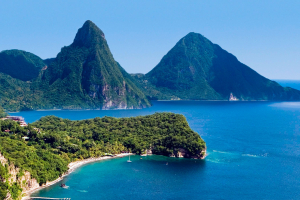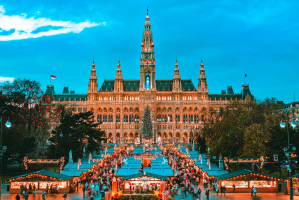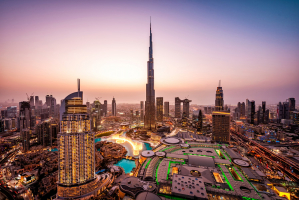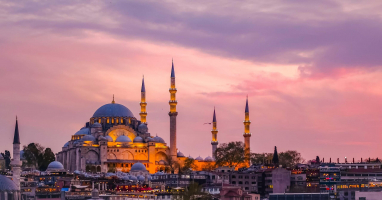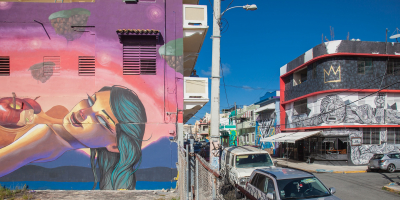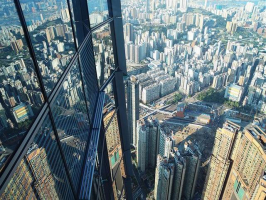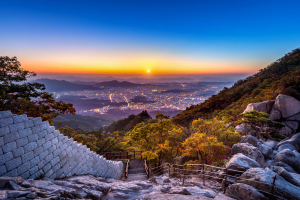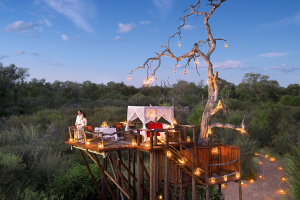Top 15 Must-Visited Places In Beijing, China
Beijing is not only the political center of China – a position it has held for more than 800 years. It also plays a vital role in the nation's cultural, ... read more...economic, scientific, and academic life. Located in the northwest of the North China Plain, not far from the western slopes of the Yanshan mountains, Beijing is an excellent place to explore this dynamic country due to its dense network of road, rail, and airline connections with other major cities. Beijing itself has no shortage of unique sightseeing opportunities. It is home to some of the country's best-known tourist attractions. Let's discover some of the must-visited places in Beijing with Toplist.info!
-
The Imperial Palace, commonly known as the Forbidden City, is China's most important attraction, dating back to the 13th century Yuan Dynasty. Its enormous size resulted from enlargements constructed between 1406 and 1420 during the Ming Dynasty after moving the capital from Nanking. It is a UNESCO World Heritage site in 1987 and its distinctive architecture and its current role as the Palace Museum of dynastic art and history.
This magnificent palace has housed 24 Ming and Qing Emperors in all, earning it the moniker "Forbidden City" because regular inhabitants were not permitted inside. The complex is 720,000 square meters and is enclosed by a 10-meter-high wall with four towers and a 50-meter-wide moat. It is separated into two sections: one for ceremonial and administrative reasons and the other for the Emperor and his concubines' private rooms.
The Meridian Gate, completed in 1420, is a highlight: the Golden River Bridges, a network of five beautifully adorned white marble bridges, and the Hall of Preserving Harmony, which served as the Emperor's dining hall. The Palace of Heavenly Purity, the enormous hall in the Inner Court, and the Hall of Military Courage, permanent home and private audience hall for the emperors, are well worth a visit. The 35-meter-high Hall of Supreme Harmony is notable for being the country's largest surviving wooden structure and its magnificently decorated gilded imperial throne.
The ancient Imperial College is just a short walk from The Palace Museum (Guozijian). Founded in 1287 by Kublai Khan and only closed in 1900, this gorgeous institution functioned as the country's official university. Former Emperors frequently visited it to better their education and expertise.
Address: 4 Jingshan Front Street, Dongcheng, Beijing
Official website: https://en.dpm.org.cn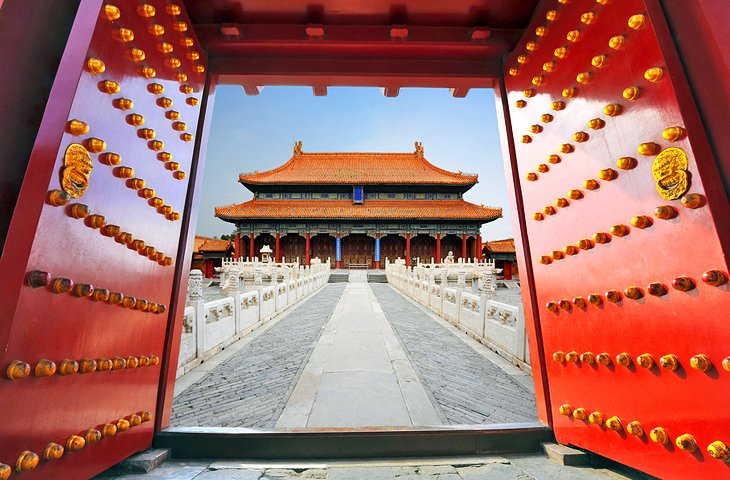
The Forbidden City 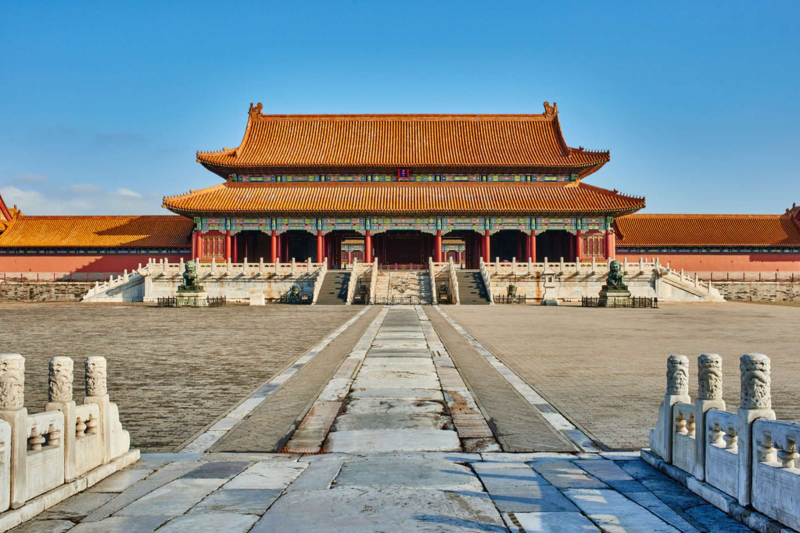
The Forbidden City -
The Great Wall of China, probably one of the country's most famous ancient buildings, is only an hour's drive from Beijing. You may take a stroll along a fantastic piece of the Great Wall dating from the 16th century and standing up to eight meters high here at Badaling Pass, the first part of the Wall to be accessible to tourists in the 1950s. The Great Wall was designated a UNESCO World Heritage site in 1987.
Along the trip, you'll be able to see several turrets and parapets that provide spectacular views of the surrounding dramatic countryside. While the trek is challenging, you may take a delightful cable car trip up to the Wall. This popular portion of the Great Wall can get crowded, so try to arrive as early as possible. Even better, consider joining a tour. The Great Wall of China at Badaling and Ming Tombs Day Tour provides excellent historical knowledge and is exceedingly convenient to explore this landmark.
Mutianyu, which dates back to the 6th century, is another famous place to see the Great Wall. It has been rebuilt and enlarged over the years, and it is becoming increasingly renowned for its amazing views, which are especially lovely in the spring and fall.
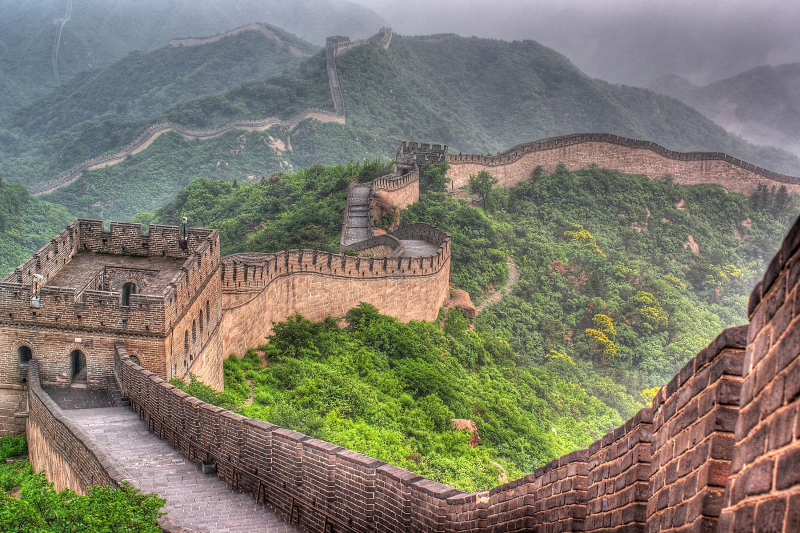
The Great Wall of China 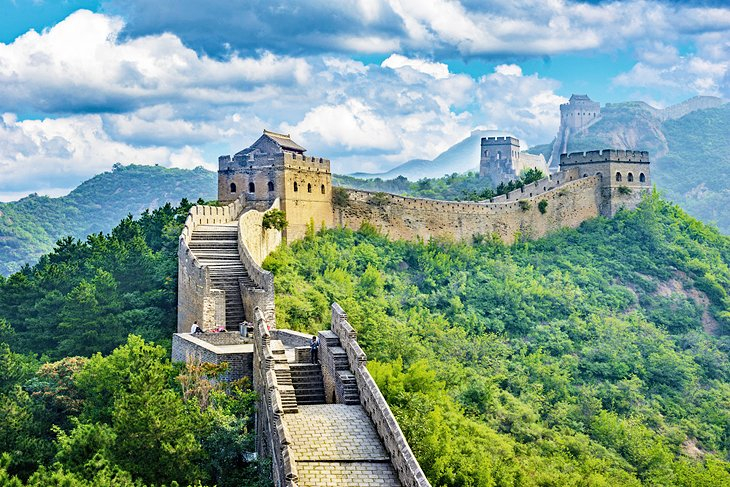
The Great Wall of China -
Tiananmen Square (the Square of Heavenly Peace) is the largest inner-city square in the world. It was created to commemorate the 10th anniversary of the Chinese Republic in 1958 and was designed to host a million people. The square's symbolic significance goes back to May 4th, 1919, when students rallied against the Chinese conditions of the Treaty of Versailles.
The Monument to the People's Heroes (Rénmn Yingxióng Jniànbei), a 38-meter-tall obelisk made of 17,000 pieces of granite and marble, and the magnificent Tiananmen Gate, known as the Gate of Heavenly Peace, are also worth seeing. It was built in 1417 and served as the principal entryway to the Imperial City.
The southernmost gate onto Tiananmen Square, Zhengyangmen, or Qianmen, is another significant entrance. This majestic tower, which dated back to the early 15th century and was renovated in the early 1900s, is regarded as one of the city's most prominent features.
The Museum of the Chinese Revolution, with displays depicting the many periods of the Chinese revolution from 1919 through the formation of the Communist Party, and the Mausoleum of Mao Zedong, where Mao's remains lie in a crystal tomb, is also noteworthy.
Address: Dongcheng, Beijing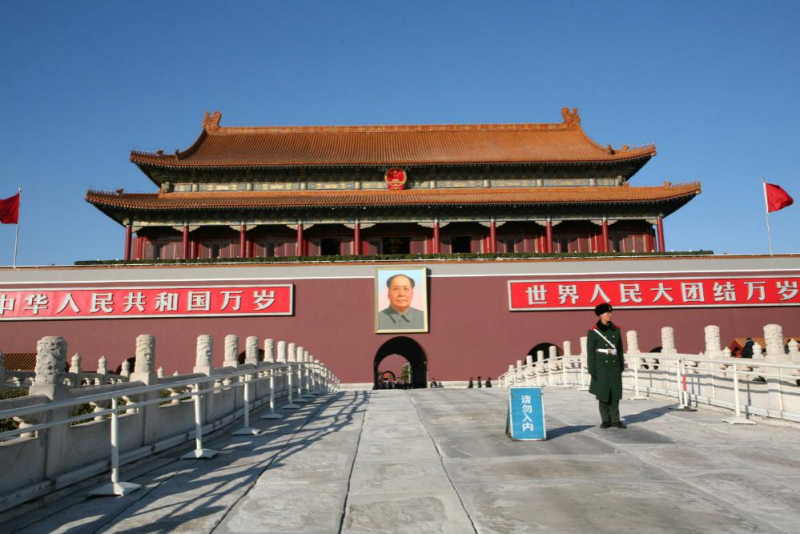
Tiananmen Square 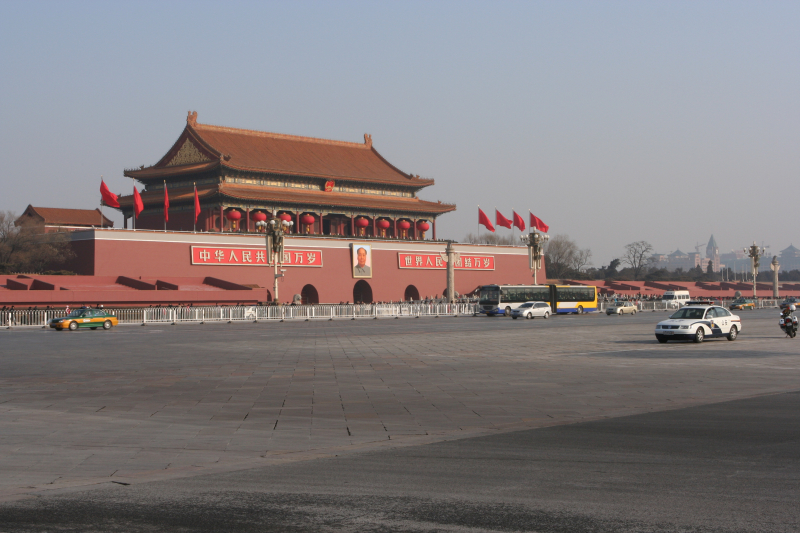
Tiananmen Square -
The Temple of Heaven in the southern part of Beijing is China's largest existing complex of ancient sacrificial buildings. Occupying an area of 273 hectares, it is three times the area of the Forbidden City. It was built in 1420 for emperors to worship Heaven. Surrounded by lush vegetation, these lovely old temples and shrines are set out in two sections – one rectangular; the other semi-circular – which together symbolize Heaven and Earth. The principal buildings include the Altar of Prayer for Good Harvests, Imperial Vault of Heaven, and Circular Mound Altar.
The Altar of Prayer for Good Harvest, 38 meters in height and 30 meters in diameter, stands on a round foundation built with three levels of marble stones. This towering triple-eave hall is under a three-story, cone-shaped glaze-tile roof in blue color crowned with a gilded knob. A circular wall of polished bricks known as the Echo Wall encloses the Imperial Vault of Heaven. The Circular Mount Altar, south to the Imperial Vault of Heaven, is where the Emperor prayed to Heaven. A round stone called the Center of Heaven Stone lies at the center that echoes when a visitor speaks loud when standing on the rock.
It was here that, on the day of the winter solstice, the Emperor would ascend the Heavenly Altar in a solemn ceremony to pray for a good harvest and offer sacrifices in the brightly decorated Hall of Prayer for Good Harvests (Qinian Dian). The hall sits on a three-tier marble terrace with railings and a roof covered with 50,000 blue glazed tiles (a marble plaque on the floor represents the dragon and the phoenix stone, symbols of the Emperor).
Another highlight is the Hall of the Vault of Heaven (Huangqiong Yu). It was built in 153 with a blue-tiled conical roof and was used to store the ceremonial plaques of Heaven and the Officials. Be sure also to visit the temple's Echo Wall, which echoes to even the quietest of voices, an effect exaggerated by three unusual echoing stones.
Address: 1 Tiantan E Road, Dongcheng Beijing
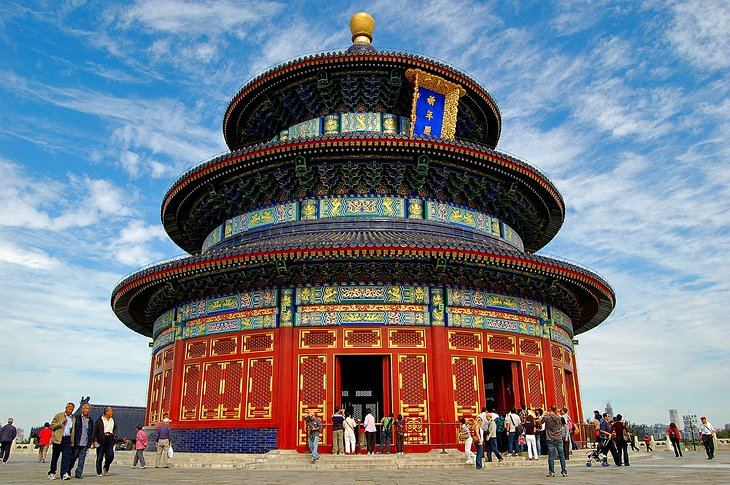
The Temple of Heaven 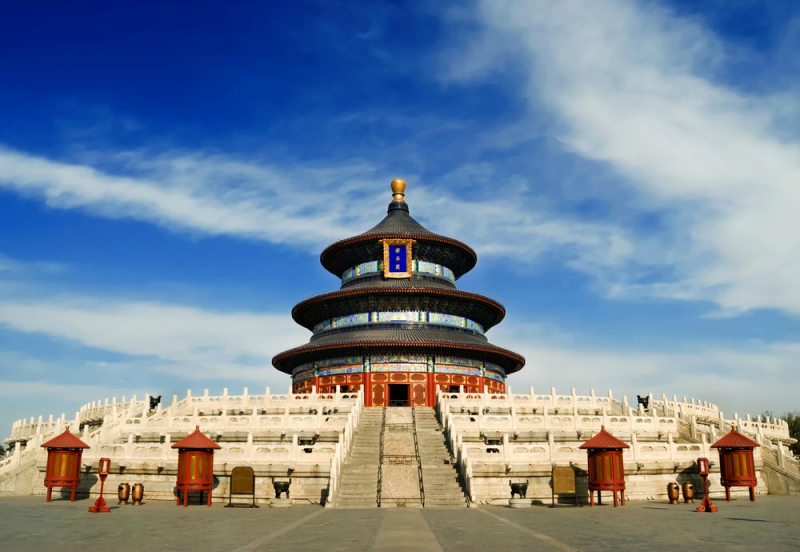
The Temple of Heaven -
Beihai Park, located near the Imperial Palace, is one of Beijing's oldest remaining imperial gardens. This gorgeous open area, laid out at the beginning of the 10th century, derives its name from adjacent Lake Beihai (North Lake) and provides numerous reasons to come.
The Round Fort, which dates from the Yuan Dynasty of 1271-1368, and the majestic Hall of Enlightenment are two of Beihai Park's most notable features. The hall, built-in 1690, has a one-and-a-half-meter-tall Buddha carved from a single block of white jade and a big black jade vase from the early 12th century.
Another remarkable feature is the sumptuous Song Qingling house, where the widow of the Republic's founder, Sun Yat-sen, resided for 18 years until her death (it is now a museum). You will also want to visit Mei Lanfang's Living Quarters (Mei Lanfang Guju), a famous male Peking Opera actor specializing in performing female roles.
Include Guo Moruo's mansion on your Beijing itinerary as well. From 1963 until he died in 1978, the great writer and historian resided in a traditional Chinese courtyard design residence. Include the stunning 17th-century White Pagoda on the Island of Exquisite Jade on your itinerary.
Address: 1 Wenjin St, Xicheng, Beijing
Official website: www.beihaipark.com.cn//english/index.html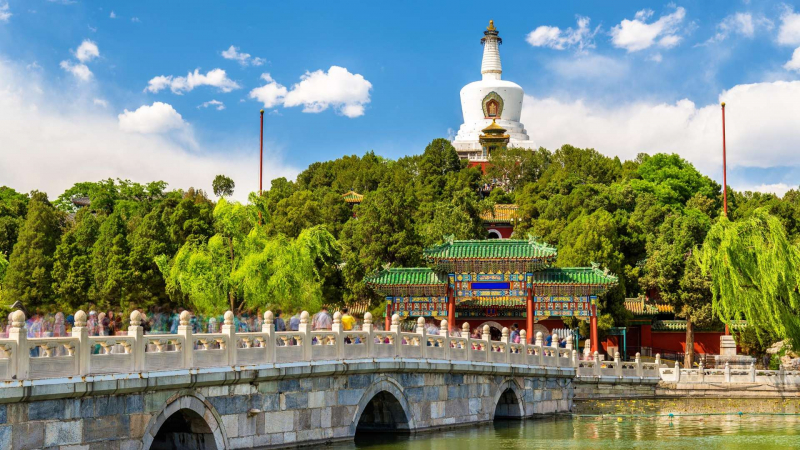
Beihai Park 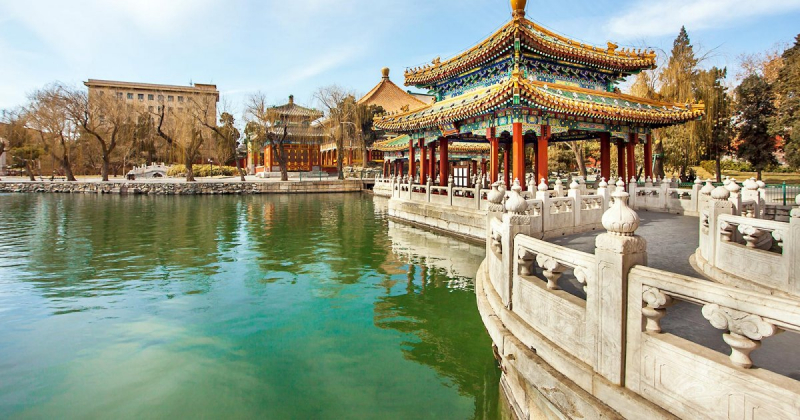
Beihai Park -
The Summer Palace, erected in 1750, was mostly destroyed during the 1860 war and was rebuilt on its original foundations in 1886. It is a Chinese landscape garden design masterpiece. The natural scenery of hills and open water is blended with manufactured structures, including pavilions, halls, palaces, temples, and bridges to create a harmonic ensemble of exceptional artistic value.
Beijing's summer palace incorporates various classical halls and pavilions within the Imperial Garden, which Qing emperor Qianlong envisioned as the Garden of Clear Ripples between 1750 and 1764. The Summer Palace combined political and administrative, residential, spiritual, and recreational functions within a landscape of lakes and mountains, following the Chinese philosophy of balancing man's works with nature. It was built on Kunming Lake, the former reservoir of the Yuan dynasty's capital, and Longevity Hill.
The Summer Palace's connected Residential area consists of three building complexes: the Halls of Happiness in Longevity, Jade Ripples, and Yiyun, all of which are constructed up against the Hill of Longevity and provide beautiful views of the lake. The remaining 90 percent of the park is designed for viewing and spiritual reflection, including garden structures like the Tower of the Fragrance of Buddha, the Tower of the Revolving Archive, the Wu Fang Pavilion, the Baoyun Bronze Pavilion, and the Hall that Dispels the Clouds. Kunming Lake has three big islands representing the traditional Chinese symbolic mountain garden aspect, the southernmost of which is connected to the East Dike by the Seventeen Arch Bridge. The West Dike is a crucial feature with six bridges of varying lengths. Temples and monasteries in Han and Tibetan styles may also be found on the north side of the Hill of Longevity and the Garden of Harmonious Pleasure to the northeast.
Address: 19 Xinjiangongmen Road, Haidian District, Beijing
Official website: www.summerpalace-china.com/English/index.htm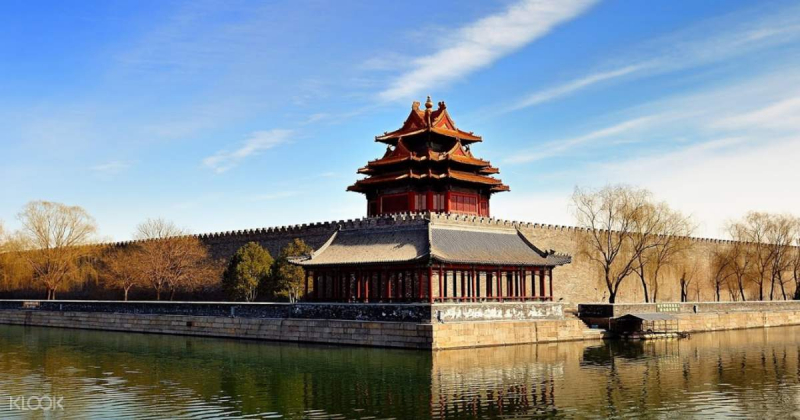
The Summer Palace 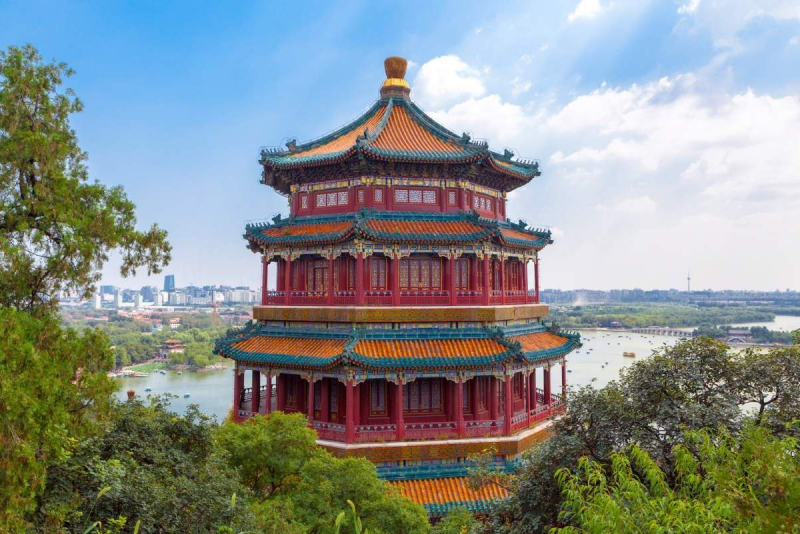
The Summer Palace -
Built on the Olympic Green, Beijing National Stadium, or the Bird's Nest Stadium, is the biggest stadium in Beijing and an important Olympic venue staged the 2008 Summer Olympics.
The outer shell is the world's largest steel structure, forming part of the most complex Olympic stadium ever constructed. Some would even go as far as to say it is one of the critical engineering marvels in the world today. The Beijing National Stadium's remarkable structure owes its unique design to the influences of traditional Chinese ceramics. It has, since the Olympics, been used to host significant cultural events and performances, including opera, pop concerts, and football matches. In winter, it's turned into the world's most significant manufactured indoor ski slope.
The 2022 Winter Olympics are around the corner. The Beijing National Stadium will witness the start of the 2022 Winter Olympics. It is the opening and closing ceremonies venue and will become the only stadium in the world to host both summer and winter Olympic Games ceremonies.
Another nearby attraction is the National Aquatics Center. It's also known as the Water Cube for its attractive night-time display, which sees it lit up and looking like a giant ice cube. In addition to being the site of Olympic swimming events, part of the building has been turned into the fun Watercube Waterpark.
Address: 1 National Stadium S Road, Chaoyang
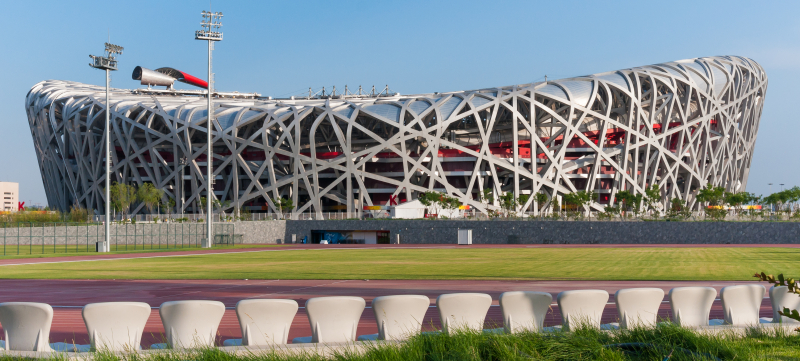
Beijing National Stadium 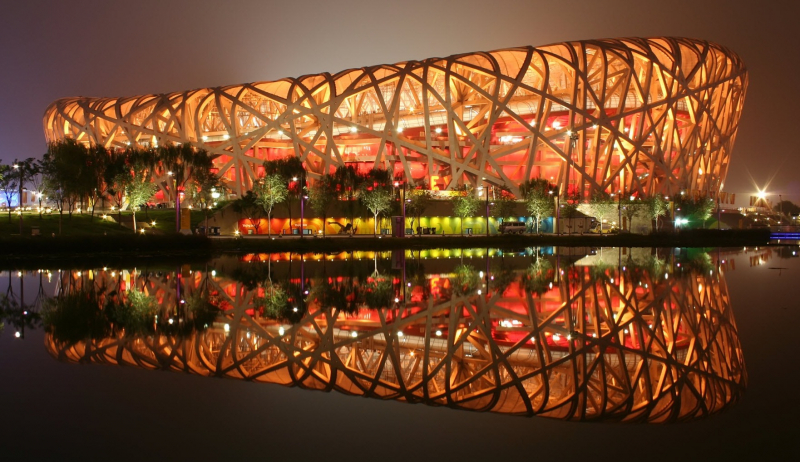
Beijing National Stadium -
Arts and culture buffs are exceptionally well catered to in Beijing. Of particular interest is the excellent Beijing Capital Museum, one of the country's leading art museums. Opened in 1981, the museum boasts a vast collection of artifacts, including ancient items of porcelain and bronze, traditional calligraphy and artwork, and many fine statues from Chinese and other Asian cultures.
Other highlights of Beijing Capital Museum's collection of more than 200,000 critical cultural artifacts – many originating from in and around Beijing – include the huge stele of Emperor Qian Long, weighing more than 40 tons, standing nearly seven meters in height and containing ancient scripts and writings.
Another modern Beijing landmark worth visiting is the National Centre for the Performing Arts, located in Beijing, China. It is known by its nickname 'the giant egg' because of its distinctive flattened-dome shape. The building is like an island in the middle of an artificial lake of 35,500 sq.m. Around the lake, a green ring of 39,000 sq.m is intended to isolate the building from the city's noise.
French architect Paul Andreu designed the National Centre for the Performing Arts and housed an opera house capable of seating 2,398. Construction work began in 2001, and the inaugural concert was held in December 2007. The building is an ellipsoid dome of titanium and glass, designed to resemble an egg floating on water or a water droplet. Andreu designed the building to be an iconic feature instantly recognizable. It is covered with 18,000 titanium plates, integrated with more than 1,000 sheets of ultra-white low-iron glass with high light transmission. The titanium shell is divided into a curved glass curtain, gradually widening from top to bottom, measuring 100 m in width. When illuminated at night, this gives the impression of a stage curtain being pulled back, while the glass curtain bathes the interior in light during the day.
Address:
- Beijing Capital Museum: 16 Fuxingmen Outer St, Xicheng, Beijing
- The National Centre for the Performing Arts: 2 W Chang'an St, Xicheng District, China
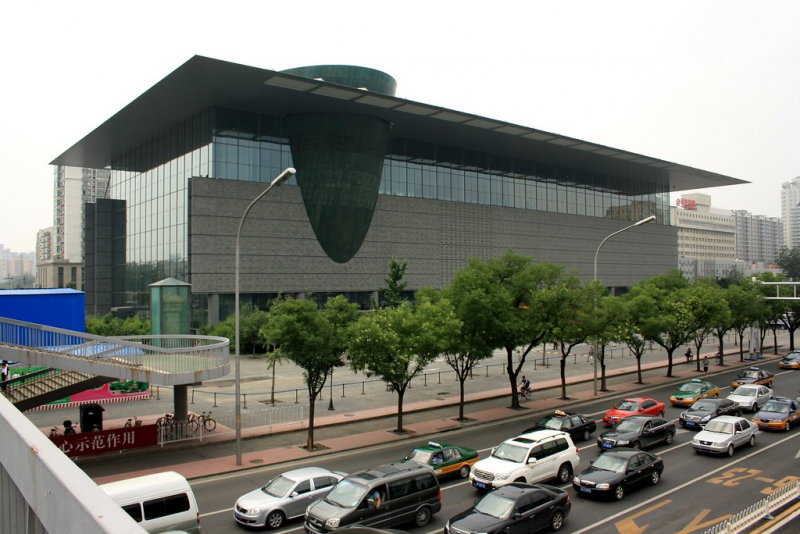
Beijing Capital Museum 
The National Centre for the Performing Arts -
The Lama Temple, also known as Yonghe Temple, Yonghe Lamasery, or Yonghe Lama Temple, is located in central Beijing. The Lama temple is the most prominent Tibetan Buddhist temple in Beijing, a popular worship place for locals. Since it was converted from a royal palace to a Tibetan Buddhist temple by the Qianlong emperor (r. 1735–96) in the Qing Dynasty, the lama temple has been one of China's most influential Tibetan Buddhism temples. It is today a museum of Tibetan Buddhism and a functioning temple where people pray.
The Lama Temple was built in 1694 during the early Qing Dynasty as the Royal Court of Prince Yinzhen. When Prince Yinzhen became the Yongzheng Emperor in 1722, as he was obsessed with Tibetan Buddhism from an early age, he ordered half of his Royal Court be turned into a house of the Gelug Sect of Tibetan Buddhism. In 1725, the remaining half of his Royal Court burnt down unexpectedly, so the house of the Gelug Sect that was left was appointed as an imperial palace outside the Forbidden City. It was named the Palace of Eternal Peace (Yonghe Gong).
After the death of the Yongzheng Emperor, the Qianlong Emperor ordered the reconstruction of Yonghe Gong in memory of his father, the Yongzheng Emperor. In 1744, Yonghe Gong was converted into an official Tibetan Buddhist temple (the Lama Temple) and became the Qing government's Beijing office of Tibetan Buddhist affairs.
Other noteworthy buildings include the Pavilion of the Four-tongued Stele (Yubi Ting), which houses a stele dating back to 1792 that contains the history of the Lama religion written in Chinese, Manchurian, Tibetan, and Mongolian. The Hall of the Buddhist Wheel (Falun Dian), the teaching and assembly hall of the monastery, its interior dominated by a six-meter-tall statue, two thrones, and numerous sacred manuscripts. Be sure to also see the most significant building at the Lama Temple, the Pavilion of Four Thousand Fortunes (Wangfu Ge), with its enormous 18-meter-high sandalwood statue.
Address: 12 Yonghegong Street, Dongcheng, Beijing
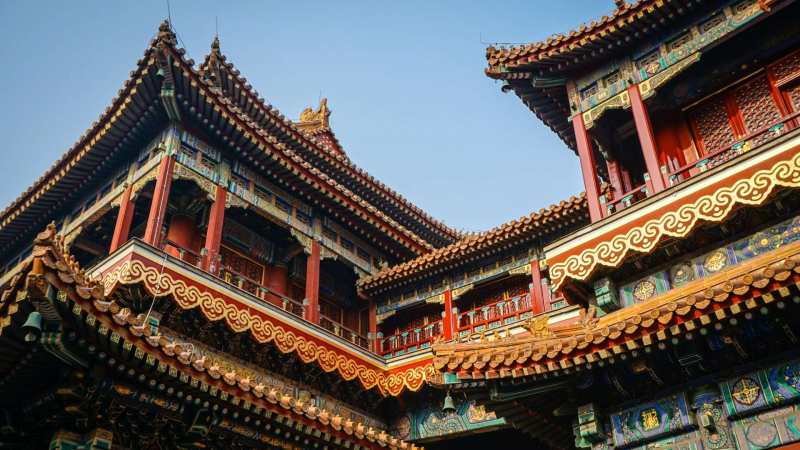
The Lama Temple 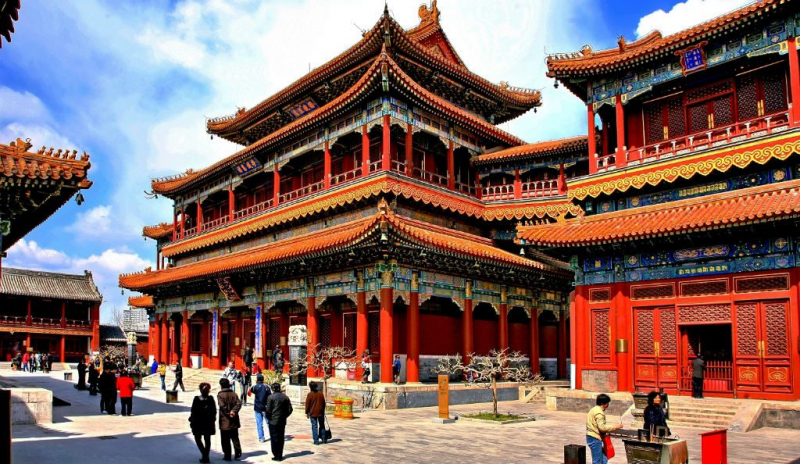
The Lama Temple -
Beijing Ancient Observatory is located on the southwest side of Jianguomen crossroad at Dongcheng District. It is a particular topic site museum of nature science displaying Chinese ancient astronomical equipment and astronomy. It has been reformed to Beijing Ancient Astronomical Equipment Exhibition Hall, which belongs to Beijing Astronomy Observatory and was officially opened in 1956.
Eight magnificent and excellent pieces of equipment made of bronze stand high and upright on the black brick platform. They are celestial body equipment, equator theodolite, ecliptic theodolite, horizon longitude equipment, quadrant equipment, Simple Phenomena equipment, horizon theodolite, and Jihenfuchen equipment made in Qing Dynasty.
Among the 10,000-square-meter facility's many fascinating old pre-telescopic instruments are a celestial globe dating from 1673 and an 18th-century armillary globe depicting the planets, along with several large bronze instruments designed by the Jesuit missionary Ferdinand Verbiest. Once part of the old city walls, this tall brick tower serves as a museum offering a glimpse into the surprising amount of knowledge of the stars and planets that existed at the time.
Address: 2 Dongbiaobei Hutong, Jian Wai Da Jie, Dongcheng, Beijing
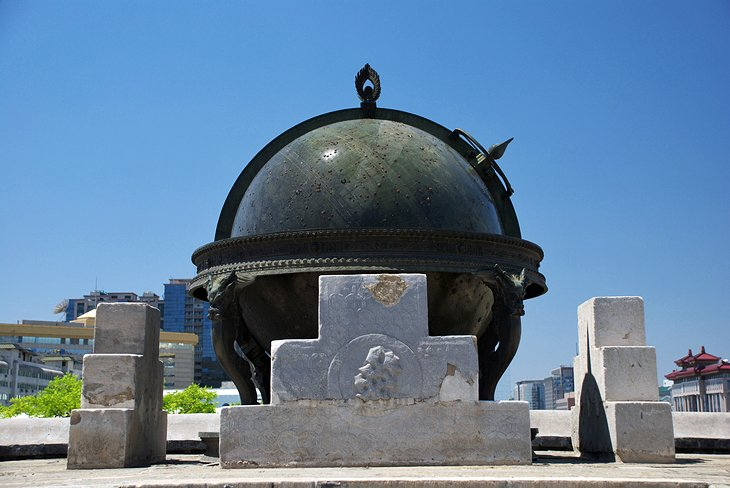
Beijing Ancient Observatory 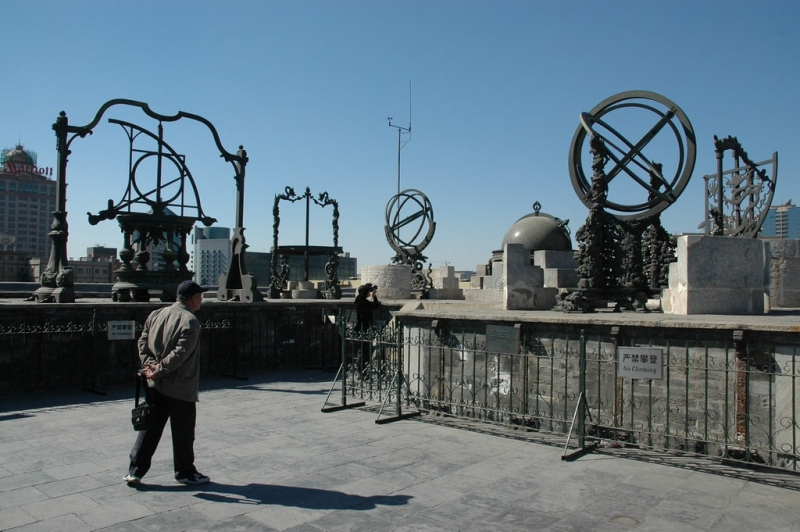
Beijing Ancient Observatory -
Fayuan Temple, also known as the Source of Law Temple - was built in AD 645 and comprised numerous rooms containing many ancient stone inscriptions, the oldest dating from the 7th century. The temple has witnessed many of Beijing's most significant historical events, including acting as a jail for Emperor Huizong in the 12th century, a site of examination for the highest offices of state, and a botanical garden.
Today, Fayuan Temple serves as a place of prayer and the home of the Buddhist Academy, China's most prominent educational institution. Other highlights include the first courtyard's bell and drum towers, the Hall of the Kings of Heaven with its fine statues, the Mahavira Hall, which houses Buddhas of the present, past, and future represented in 18 Luohan figures. One of the temple's most valuable objects, a Han Dynasty (AD 25-220) ceramic statue in the Dabianjue Tang Hall.
The Zhihua Temple is another Buddhist landmark worth seeing. It is one of the most prominent original Ming-era complexes in Beijing's old town, dating from 1444. The two-story Tathagata Hall (Rulai Dian), named for its statue of the transcendental Buddha (it's also known as 10,000 Buddha Hall because of the many little Buddha figurines adorning the walls), is particularly noteworthy.
Address: 7 Fayuansi Front St, Xicheng, Beijing
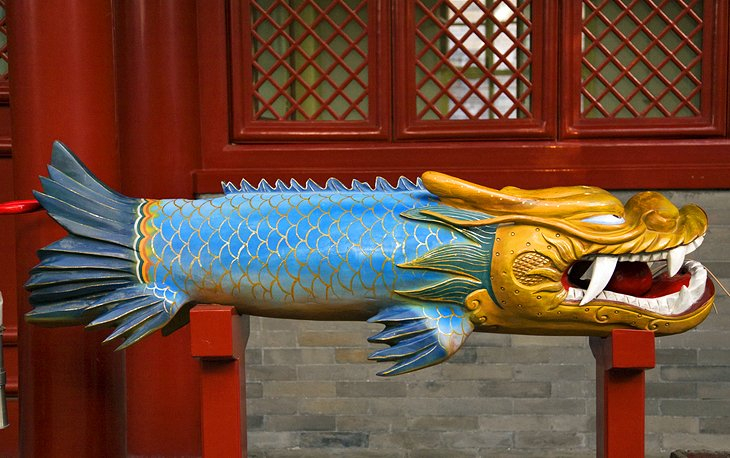
The Fayuan Temple 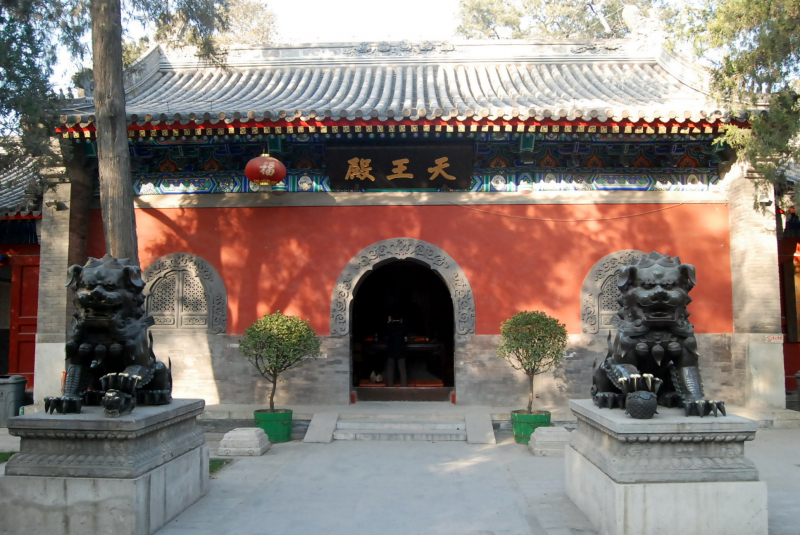
The Fayuan Temple -
Jingshan Park is a beautiful royal landscape garden. It covers an area of 57 acres (about 230,000 square meters). The park stands on the central point of the south-north axis of the city and faces the north gate of the Forbidden City. It is found on Jingshan Hill, originally named Wansui Hill (Long Live Hill), Zhen Hill, or Meishan Hill (Coal Hill). The mid summit of the hill is the highest point in Beijing. The visitor can get a full and clear view of the Forbidden City from the peak.
During the Yuan (1271-1368), Ming (1368-1644), and Qing (1644-1911) dynasties, Jingshan Park served as an imperial garden. They were adequately laid out under the Ming Dynasty when it planted numerous fruit trees and many palaces and pavilions built for the emperor to make sacrifices to his ancestors. As a result, the royal families enjoyed amusements here, like hunting in the hills. After 1949, Jingshan Park was entirely rebuilt, with the paths in it paved and most of the buildings renovated. The present is one of the 'AAAA' Scenery Spots in China and a 'must' for visitors to Beijing.
The hill inside Jingshan Park has five summits, and on each meeting, there is a pavilion built-in 1751. A copper Buddha statue was initially placed in every pavilion, which represented one of the five tastes- sour, bitter, sweet, acrid, and salt. It is a pity that they were all lost during the warfare of 1900. Among the five pavilions, the Wanchun Pavilion sits at the hill's central point of the city in the middle of the five summits. It is a perfect place to appreciate the full view of the city. From this pavilion, visitors can see the glorious and magnificent Forbidden City in the south, the dignified Bell and Drum Towers in the north, as well as Beihai Park and Miaoying Temple in the west.
After years of receiving rubble from the old city wall and large quantities of soil excavating the moat surrounding the palace, the once-low natural mound soared to its current height.
Address: 44 Jingshan W St, Xicheng District, Beijing
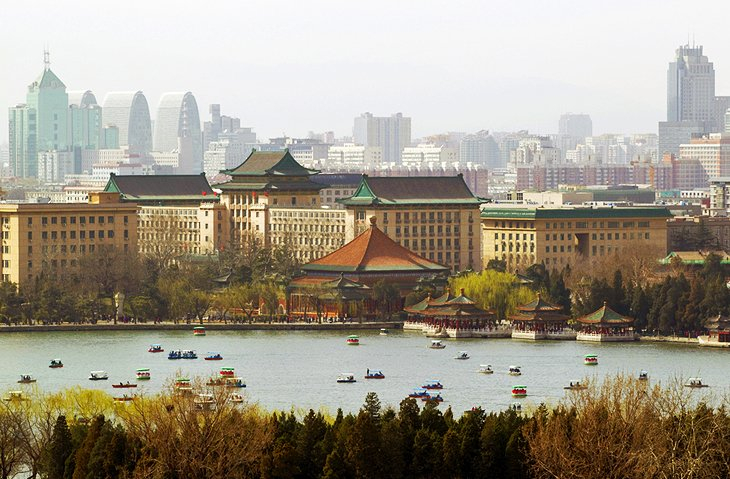
Coal Hill Park (Jingshan) 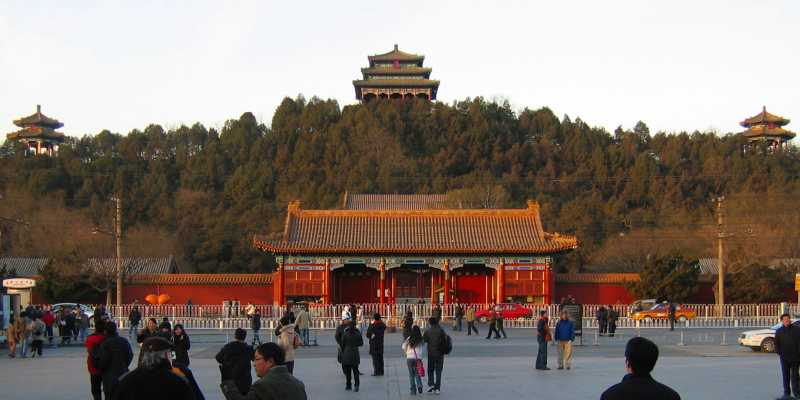
Coal Hill Park (Jingshan) -
The Beijing Temple of Confucius is a short walk from the Lama Temple, through a charming side lane covered by decorative gates. It was built in 1302 and is dedicated to Confucius, the renowned philosopher, and teacher whose teachings influenced public and private life for generations.
The Beijing Temple, one of China's most well-known Confucius temples, previously conducted numerous extravagant events commemorating its namesake under the supervision of the emperor. The courtyard has 198 steles with inscriptions naming all 51,624 Confucian academics who completed the state's highest examinations after 1416 until discontinued in 1904.
The Hall of Great Achievements is a particular highlight (Dacheng Dian). It has several temples devoted to Confucius, his followers, and other Confucian scholars. Many historical musical instruments and other ceremonial artifacts use in the celebrations held on the huge terrace in front of the hall.
Niu Jie Qingzhen Si Mosque, erected in AD 995, is another religious building worth visiting for its beautiful façade (non-Muslims cannot enter). The Muslim quarter's oldest and largest mosque contains a minaret, a six-cornered moon observation tower, and two pavilions with many steles with Chinese and Arabic inscriptions.Address: 15 Guozijian Street, Dongcheng, Beijing
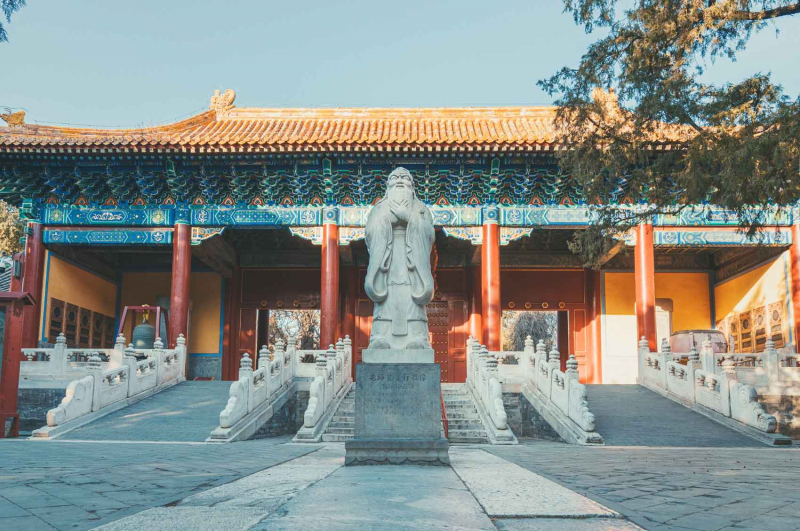
The Beijing Temple of Confucius 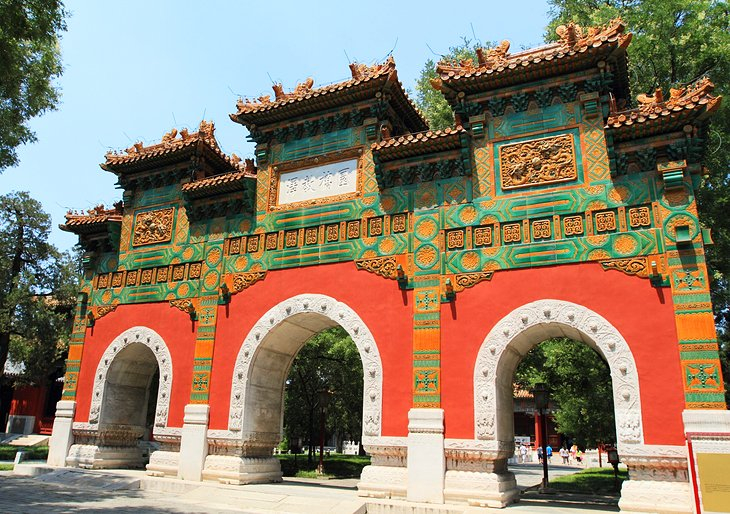
The Beijing Temple of Confucius -
The Beijing Zoo (Bei jing ding wù yuán) is located in the northwest section of the city and encompasses more than 220 acres. It was founded in 1906, making it one of China's oldest zoos. The country's largest zoo, with about 15,000 animals from 1,000 species, includes numerous rare local species such as South China tigers, snow leopards, golden snub-nosed monkeys, pandas, and those not so uncommon such as the red-crowned crane and Pere David's deer.
Elephants, lions, and jaguars are among the many species on display, scattered around grounds that nearly mimic ancient Chinese gardens, replete with deep woodlands, meadows, rivers, streams, and ponds, well as a variety of attractive pavilions and terraces. There is also a well-stocked aquarium at the zoo.
Beijing Aquarium is highly recommended for anyone visiting Beijing Zoo. It opened in 1999, is widely recognized by tourist bodies as one of the country's top attractions, and is the largest inland aquarium globally. The aquarium features thousands of different aquatic species - man-eating fishes, precious Chinese sturgeons, giant sea elephants, and fierce sharks are some highlights. Tourists can also enjoy shows performed by dolphins, sea lions, and whales in the aquarium's Ocean Theater. While here, visitors also have the chance to sample some of the nearby historical relics: Lemarck Hall was built to commemorate the life of Lemarck (1744-1829), a famous French natural historian, and has also been used as the Chinese Botanical Science Research Base.
Address: 137 Xizhimen Outer St, Xicheng, Beijing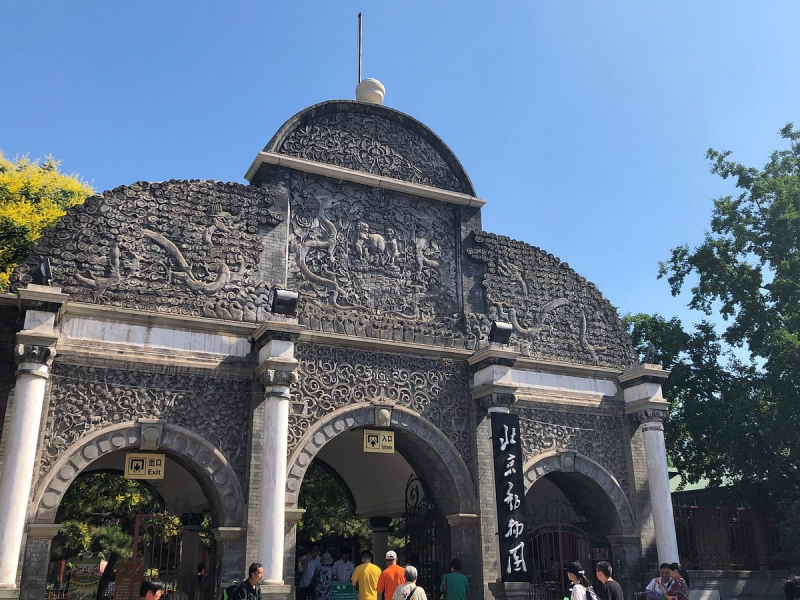
Beijing Zoo 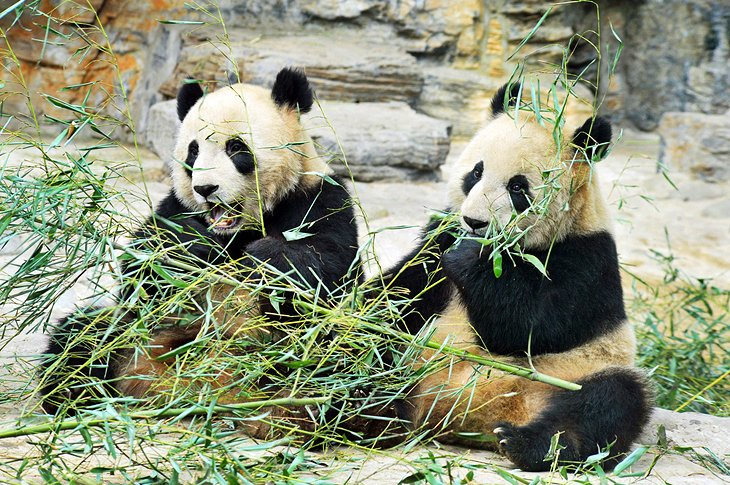
Beijing Zoo -
Although now mainly ruins, the Old Summer Palace (Yuanmingyuan) is located in Yuanmingyuan Park in northwestern Beijing and is well worth a visit. Once the imperial residence of the Qianlong Emperor, it was considered one of the most spectacular achievements of Chinese architecture and garden design when constructed in the 1700s and was for a time known as the "Garden of Gardens."
Looted and destroyed by the British and French during the Second Opium War in 1860 – the palace was home to a vast and substantial collection of art and antiquities – it took hundreds of troops three days to burn and demolish the site. These days, the grounds serve as a popular public park, and the old ruins are a delight to explore. To gain a picture of just how spectacular the old palace once was, be sure to pop into the small on-site museum with its reconstructions and models.
While visitors flock to the opulent halls, gardens, and pavilions of the Summer Palace, a UNESCO World Heritage Site, most ignore the charred ruins sitting just next door. But in its heyday, the Old Summer Palace was the pinnacle of Chinese imperial grandeur, covering more than 300 hectares (800 acres) of immaculately curated Beijing terrain.
Official wesite: www.yuanmingyuanpark.cn/sy/english/PON/
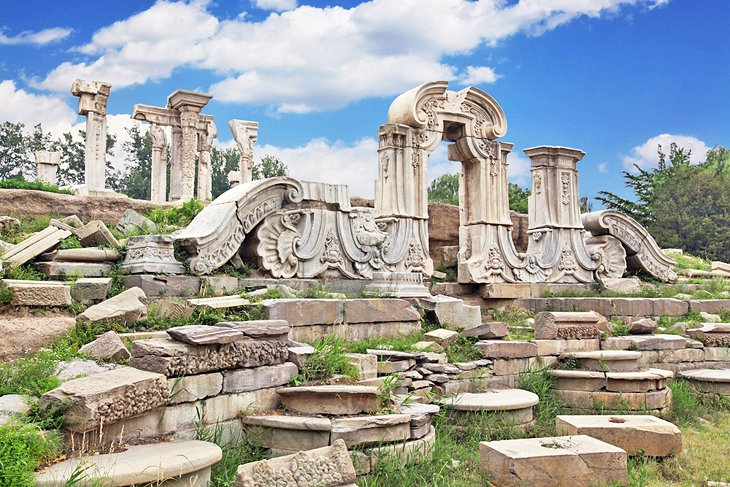
The Old Summer Palace at Yuanmingyuan Park 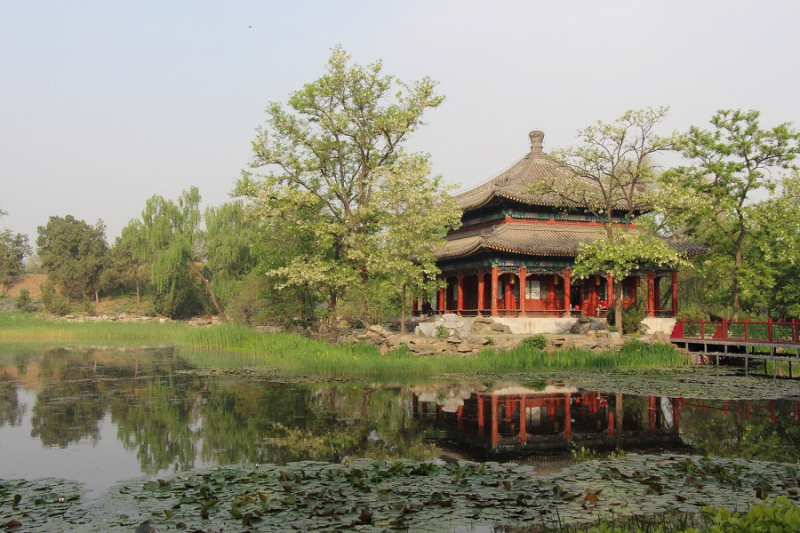
The Old Summer Palace at Yuanmingyuan Park

















